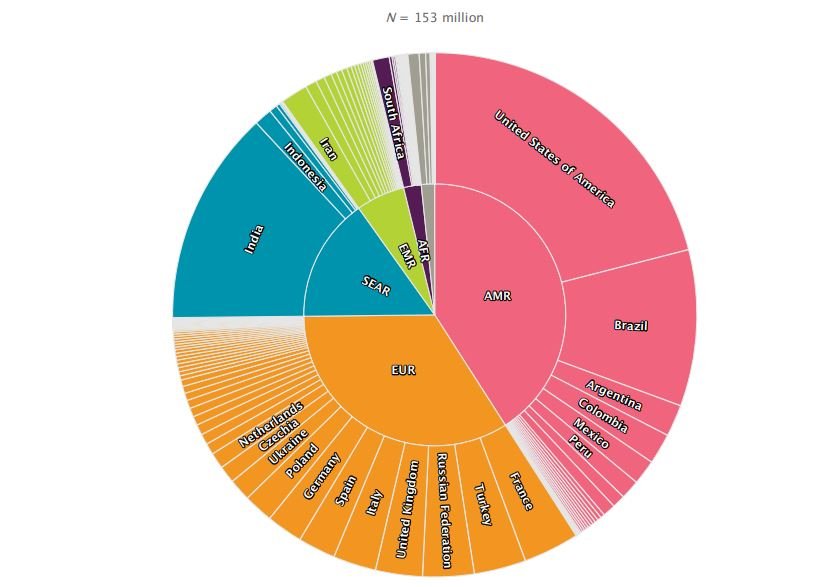Health indicators of 194 countries. The report is produced by the WHO.
Emerging only at the end of 2019, the COVID-19 pandemic has quickly become a global threat to population health,
infecting over 153 million people, devastatingly costing more than 3.2 million lives by 1 May 2021 globally. COVID-19
has become a leading cause of death, caused a considerable number of additional deaths indirectly at global,
regional, and national levels, and has inevitably shortened life expectancy in many countries, with still unknown
long-term impact on morbidity. Preliminary WHO estimates suggest the total global excess deaths attributable
to COVID-19, both directly and indirectly, amount to at least 3 million in the year 2020. This is 1.2 million deaths
more than the reported 1.8 million global COVID-19 deaths.

COVID-19 is disproportionately impacting vulnerable populations, including the economically disadvantaged, older
adults and those who live in congregate residential settings or with existing underlying health conditions. This
draws further attention to persistent inequalities in both health outcomes and health determinants, including
risk factors, social determinants and access to health services, within and across countries. The pandemic
poses critical challenges to the health systems in low-resource settings and is jeopardizing the hard-won health
and development gains towards achieving the WHO Triple Billion targets and UN Sustainable Development
Goals (SDGs). However, the lack of disaggregated COVID-19 data and strong data infrastructure with good vital
registration systems limits the development of more effective and better targeted policies and the allocation of
resources that are data-driven for mitigating the pandemic situation and restoring progress towards the Triple
Billion targets and SDGs








